By Eric Niderost
Lieutenant (j.g.) John “Ted” Crosby banked his Grumman F6F-5 Hellcat around, observing the life-and-death drama that was unfolding below him. The Yamato, then the world’s largest battleship and the pride of Japan, was entering its death throes. It was a few minutes after 2 o’clock on the afternoon of April 7, 1945, and aircraft from the Task Group 58.4 carriers Yorktown (CV-10), Intrepid (CV-11), and Langley (CVL-27) were moving in for the kill.
Crosby had seen his share of action and would soon become a fighter ace, but today his mission was more pacific. He was piloting a photo plane, there to document the unfolding drama. As an observer, he had a ringside seat to the last major sortie of the Imperial Japanese Navy.
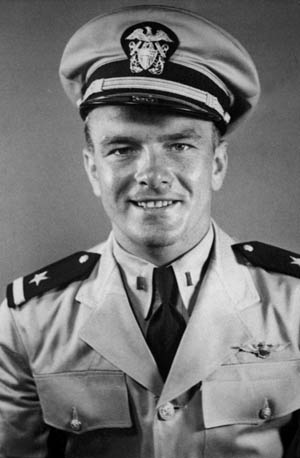
By this time Yamato was a floating, flaming wreck, her antiaircraft crews decimated by Hellcat strafing runs, her upper works torn into twisted pieces of metal by 1,000-pound bomb hits. Three bombs hit Yamato amidships, followed by several torpedoes. The ship began to list heavily to port, the movement becoming a pronounced roll.
As Ted Crosby watched, Yamato’s giant, 18-inch guns hit the water, their enormous weight probably helping the battleship capsize. Suddenly, Yamato’s No. 1 magazine exploded, sending up a huge coil of smoke and flame that could be seen for over 100 miles. It was a strange foretaste of the atomic mushroom clouds that would envelope Hiroshima and Nagasaki a few months later.
Watching from above, Crosby had no feeling of elation. “I was thinking of the Japanese crew,” he said in a 2011 interview. “Three thousand lives lost.” As a former fighter pilot and Navy man, he could appreciate what it meant to go down fighting with his comrades.
During his World War II career, Ted Crosby served aboard two Essex-class carriers, Bunker Hill (CV 17) and Hornet (CV 12). There were 24 Essex-class carriers built during the war, and they soon became the backbone of America’s naval offensive in the Pacific. The efforts of pilots like Crosby not only turned defeat into victory, but also changed the course of naval warfare forever.
Turning Point at Midway
In the 1930s, battleships were considered to be the most important vessels in any fleet. Essentially huge gun platforms, they were supposed to trade salvos with the enemy until the foe was battered into submission. It was a long tradition, dating back to the age of sail and men such as Nelson and Drake. Pearl Harbor changed all that. It is ironic that the Japanese, having blazed a trail with airplanes against capital ships, turned back and followed the traditional road by commissioning vessels like Yamato.
By June 1942, most of Japan’s strategic objectives had been realized. The U.S. Pacific Fleet had been neutralized, at least temporarily, and the Philippines and much of resource-rich Southeast Asia overrun. Japan seized a number of far-flung islands, establishing them as a defensive barrier to protect the home islands. Flush with success, the Japanese began believing their own propaganda that America was a weak-willed, “soft” nation.
The Battle of Midway was the high-water mark of Japanese conquest in the Pacific. Japan lost four carriers, the Americans one. Thereafter, the Japanese would be largely on the defensive. By 1943, new American carriers were being commissioned, including the Bunker Hill and Hornet. It is here that John Theodore Crosby, known to his friends as “Ted,” enters the story.
“I wanted to go Navy”
Ted Crosby was born in Eureka, California, on July 30, 1920. When his family moved to the San Francisco Bay area, Ted would visit ships when the fleet came into port. But as he matured, his initial goal was to be a pilot in commercial aviation. He had an older brother who got priority, at least when it came to a college education.
“My mother could only afford to send one of us to college,” Ted explained. “My brother was much better in math than I was—in high school, he was even doing great in calculus. There was a family meeting about it, and he ended up in the University of California, Berkeley.”
Undaunted, Ted worked at the Golden Gate International Exposition (World’s Fair) on Treasure Island and managed to save enough money to attend Marin College, just north of San Francisco. War interrupted his studies, though, and on the spur of the moment he and some friends went to Hamilton Field (later Hamilton Air Force Base) to see about joining the Army Air Forces.
Crosby passed the physical and was considered a prime candidate for flight school, but the 22-year-old started having second thoughts. “I said no, because I wanted to go Navy. I understood Navy, and felt it gave you the best training.”
Without any further ado, Crosby went down to San Francisco’s Embarcadero waterfront and enlisted in the U.S. Navy. It was a long and painstaking process to create a carrier pilot, and Ted recalled that the Navy was in no hurry. “When I did sign up they told me to go back to Marin College, finish the semester, and they’d send me orders. I finally was told to report to [preflight school] at St. Mary’s College, Moraga, California.”
These initial stages were pretty easy since “I was in good shape. At St. Mary’s we were building muscles, running along railroad tracks, and taking ground school. After about a month and a half, I went to Livermore Naval Air Station.” Places like Livermore were sometimes called “E bases,” short for elimination bases. The failure or “wash-out” rate could be as high as 30 percent in some places.
Crosby was now an AvCad, or naval air cadet. If he passed, he would become an officer and bear the prestigious title of naval aviator trained on Stearman N2-S “Yellow Peril” biplanes before being transferred to Corpus Christi, Texas, to earn his wings.
The newly minted aviator traveled to Opa-Locka, Florida (near Miami) for carrier landing practice. After that, it was on to the freshwater carriers on the Great Lakes. “They had two old coal oilers that they had converted into small flattops,” Crosby recalled. “I practiced on the USS Wolverine.”
Joining With the VF-18
After his training, Crosby went on leave, then headed to San Diego four days before his liberty was to expire. Ted was anxious to be assigned to a large carrier. “That’s where the action was,” he explained. The assignment officer had other ideas, though, and assigned Crosby to an escort carrier. About one-half the length and one-third the displacement of their bigger sisters, escort carriers were sometimes called “baby flattops” or “jeep carriers.”
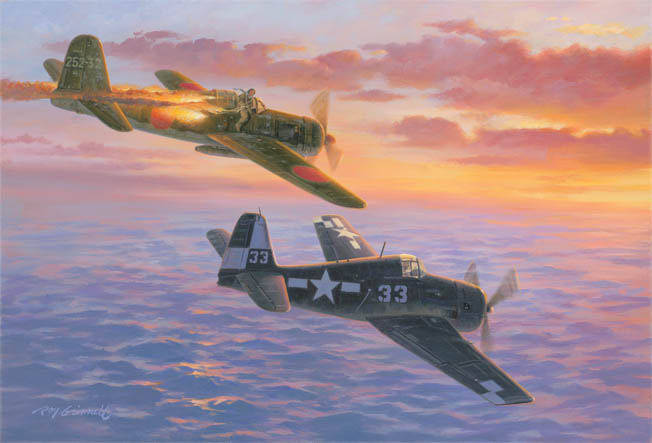
The assignment officer told Crosby in no uncertain terms that he was going to an escort carrier. “No,” Ted replied, “I’m not. I’ll be back tomorrow. I don’t want a jeep carrier. If I go in, I’m going to go in on one of the big guys.” It was a stubborn contest of wills—each day Crosby would return, and each day the assignment officer would offer an escort carrier.
Crosby received help from an unexpected quarter. Lieutenant James Bellows, a veteran of the Battle of Midway, was sitting at another desk and overheard the arguments. Bellows was in San Diego to form VF-18, a new fighter squadron of Hellcats. “He’s coming with the VF-18,” Bellows declared, whereupon the assignment officer had a fit. “He’s mine!” the assignment officer insisted, stating he had other plans for Crosby.
Bellows was undeterred. “I think I’ve changed those plans,” he said flatly. And so it was that Ted Crosby was assigned to VF-18 on the carrier Bunker Hill. In a sense, Crosby and Bunker Hill were both novices in the art of naval warfare. Bunker Hill was a new ship, commissioned in May 1943. By coincidence, Ted had also been commissioned that same month and year.
Ted Crosby’s First Battle
Bunker Hill reported to the Pacific in the fall of 1943. By this time Allied offensives on New Guinea were prospering, and Guadalcanal in the Solomons had been taken after a bloody six-month fight. As the Americans pushed forward in the South Pacific, the major Japanese base at Rabaul was a prime target.
Rabaul, located on the island of New Britain in the Bismarck Archipelago, featured five airfields, a harbor full of shipping, and formidable antiaircraft defenses. When U.S. Marines landed on Bougainville, well within striking distance of the Japanese base at Rabaul, it was essential that the facility be neutralized.
An autumn raid on Rabaul was a major effort involving several American carriers. It was also Ted Crosby’s first taste of battle. The raid of November 11, 1943, involved dogfights on a massive scale. It was an aerial free-for-all, with the new F6F Hellcat generally gaining the upper hand over the vaunted Mitsubishi A6M Zero or “Zeke.”
One incident stuck in Ted’s mind after the passage of more than 65 years. As they flew over Rabaul, greenhorn Ted stuck close behind his division leader, Lieutenant Bellows. Suddenly, there was a blast of gunfire and Crosby was shocked to see the blazing fuselage of a Zero streak by just overhead, its fiery trail marked by an arc of dark smoke.
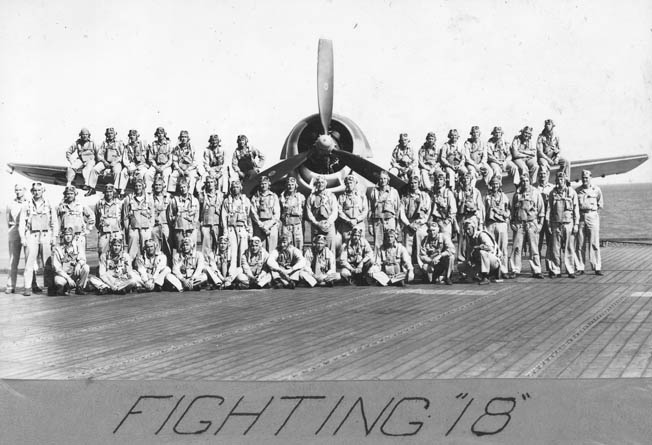
Bellows had seen the Zero and shot it down before Crosby was even aware of its presence. “At that moment,” Ted confessed, “I wondered if I could do this. But later, back at the Bunker Hill, Jim [Bellows] told me that I was following him too closely; I should drop back a bit, so I could better be able to look around for myself. I followed that advice.”
Shooting Down a Betty: Crosby’s First Kill
On November 26, 1943, Ted got his first kill—a piece of a Mitsubishi G4M Betty bomber. Bellows was leading his division—which included Ted—back to the Bunker Hill after a routine CAP (combat air patrol) when the carrier radioed them in flight. Ted said, “ The CIC [Combat Information Center] called us and said, ‘Can you take another assignment?’ Jim Bellows said, ‘Yes, but remember—we only have between 20 minutes to a half hour of fuel left.’ The CIC guys said, ‘OK. Here’s the heading….’”
It seems that there were some Japanese bombers in the area, as Ted put it, “snooping around.” Bellows and his four Hellcat pilots finally caught up with a Betty, probably originating from Rabaul. The Betty was a twin-engine bomber, effective but very vulnerable due to its lack of armor and self-sealing gas tanks. “The tail gunner was giving us a fit,” Ted recalled, “so I felt he had to go.”
A steady stream of .50-caliber slugs sprayed from Ted’s six machine guns peppered and shattered the Betty’s tail and rear-gun position. Other Hellcats chimed in, joining Crosby’s symphony of destruction until the stricken bomber crashed. When he got back to Bunker Hill, he claimed the Betty, but it was determined that the other pilots had a share in its downing. As a result, Crosby’s official score stood at one-quarter of a Japanese bomber.
There was a harrowing postscript to the Betty episode. “We were running low on fuel,” Crosby remembered, “and it was getting dark. When a ship goes by, it can leave a kind of fluorescent wake behind it. We detected just such a wake, probably a carrier. So, it was simply a matter of ‘Which way did he go?’”
It turned out the ship in question was Belleau Wood (CVL 24), a light carrier. “Since it was getting dark, the last thing they wanted to do was to turn on the ship’s lights. They did turn on a row of red lights in the center of the deck, so we could see something as we landed. But, you see, none of us had been trained for night landings, so this was definitely something different!
“I went in first, because I had used my fuel injector to get an extra push to get that Betty. In fact, I thought that I had less fuel than the other guys in the flight. Yet, when one of the other guys landed, his plane died on the spot—no more gas!”
Ted brought his Hellcat in without incident.
VF-18’s Raids
As the months passed, Crosby and his squadron honed their skills. VF-18 and its torpedo bomber and dive bomber counterparts raided Japanese strongpoints and provided ground support for Marines and soldiers landing on fortified islands. Notable raids included Truk in the Carolines, the Marianas, and Kavieng. Ted said these raids followed the same pattern. “We did most of these island raids early in the morning. We’d hit them at sunrise, so it would be a while before we’d encounter any flak. Once we rousted them out, of course we’d get antiaircraft fire. Sometimes you could even see Japanese troops running to their battle stations.
“When they started their antiaircraft fire, we fighters would be trying to protect our dive bombers and torpedo bombers. That meant strafing to knock the antiaircraft batteries out—and that we could do. You have no idea what six .50-caliber machine guns can do. In fact, they can tear up anything in their path.”
In dogfights and strafing runs, Ted had only one rule: “Don’t be in any one spot for more than 10 seconds! When I looked in my rear view mirror, I’d often see flak bursts where my plane had just been.”
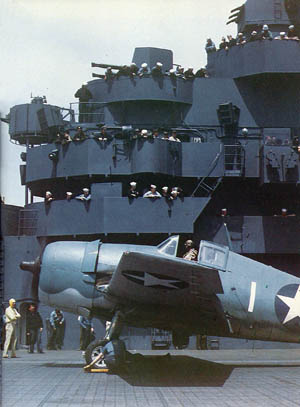
Crosby remembered the plane captains with particular affection. A plane captain is not to be confused with a mechanic. “A plane captain,” Crosby explained, “was required to stay with a particular airplane, tie it down when they moved it to a new position, etc. Each plane had a captain. If they moved a plane, a captain would untie it [from the deck], take all the cables and tie-downs with him, and secure the aircraft again. But when it would be raining like the devil, you might see the plane captain in the cockpit, canopy closed, sleeping!
“They were good young people,” he recalled with a smile, “and you got to know them each time you saw them. Every time you’d mount a Hellcat you’d greet them just like meeting them on the street––‘How ya doing? Got any problems?’ And sometimes you’d find a kid who had a real family problem, and maybe you’d write a note to his parents telling them what a great job he was doing. I did that a couple of times.”
The F6F-5: An “Excellent Plane”
Crosby once had a major problem with a particular Hellcat. “Whenever we’d have a break in flight operations,” he remembered, “I would get with the plane captain and ask him what problems we were having with No. 14; this plane had an oil leak in the cooler system. No matter what you did, you’d come back with oil all over the belly. He and I spent a good deal of time trying to find the oil leak on that thing!”
The discussion of Hellcat No. 14 brought up another revelation: carrier pilots did not have their own “personal” planes. Crosby might have flown No. 14 several times, but it was strictly the luck of the draw. It was not his “personal” plane, nor did he have his name and/or kills painted on the fuselage. Land-based Army Air Force pilots could and did fly the same planes consistently, but not Navy aviators.
The topic came up when Ted discussed a typical daily routine: “Each squadron had its own ready room. The torpedo planes and dive bombers all had a ready room of their own. You’d find storage for your May West life jacket and other gear, and hangers on the wall for your flight suits. You’d go to the ready room to get briefings on what was going to happen that day.
“There was also a blackboard where your plane assignment would be chalked. Of course, you had your own group, and you went to your plane as part of that group, but you had no idea of what the flight deck looked like that day, or what plane you’d end up with.” That was why Navy pilots almost never had their kills painted on particular planes; there was no guarantee that they would get the same plane again. According to Ted, it seems that photos of Navy aces with their kills emblazoned on the side are mostly “photo ops” and not much more.
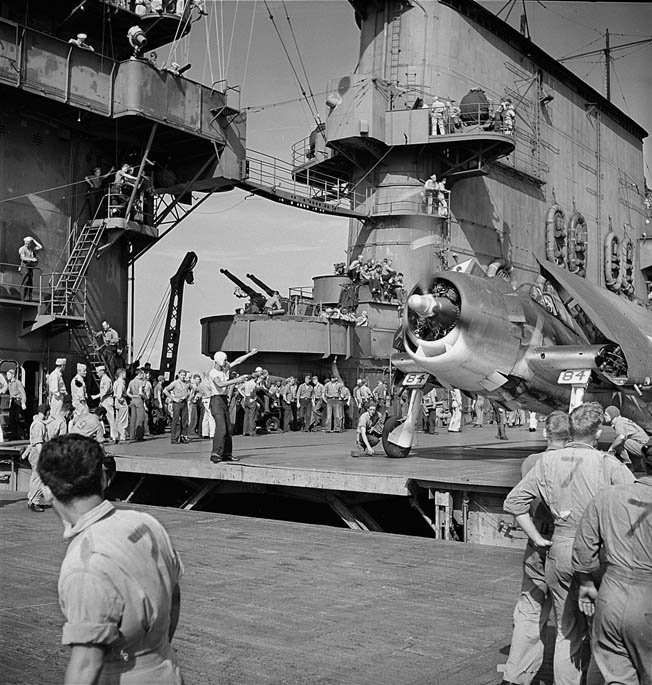
Ted Crosby had high praise for the Grumman Hellcat, particularly the F6F-5, which was an improvement over the earlier F6F-3 version. “Excellent plane!” Crosby enthused. “For example, on the F6F-5 there were self-starters to start the engine. I was just a new, young kid, but I knew once we had the F6F, we had it made! It was a great airplane from the start, thought it did have flaws. Those flaws were corrected.”
An earlier carrier plane, the Grumman F4F Wildcat, was found to be outclassed by the Japanese Zero. For one thing, the Zero was faster and could outclimb the Wildcat. Zeros would climb steeply, hoping that inexperienced Wildcat pilots would follow in pursuit. Usually they did, only to have their engines stall out. Powerless and in a corkscrew dive, the Wildcats would be easily picked off by the enemy.
But the Hellcats had a supercharger that enabled the fighter to climb sharply with ease. Ted noted that many Zero pilots discovered that the Hellcat was not a Wildcat—usually the last lesson they ever learned.
Meeting the Jolly Rogers
The Navy also used Chance Vought F4U Corsairs, the iconic gull-wing fighters that many associate with the Marines. The early Corsairs had teething problems, and it was thought that the airplane’s hose nose configuration made it less than ideal for carrier landings.
The Corsairs could land on flight decks well enough, but the main problem was logistics. It would be hard to supply single squadrons of Corsairs when most carrier planes were Hellcats or Wildcats.
“When I first got on the Bunker Hill,” Crosby remembered, “there was a squadron of Corsairs aboard. But they were transferred to Espiritu Santo, an island in the Solomons. The pilots were pretty disgusted.”
The Corsair squadron Ted referred to was VF-17, nicknamed the “Jolly Rogers.” The Corsairs had a brief reunion on Bunker Hill when they came down for refueling. “Those guys looked pretty disheveled,” Ted said. “Kind of dirty, with beards.…” They managed to get some good Navy chow before taking off again.
Defending From Japanese Dive-Bombers
By the end of 1944 and early 1945, it was clear that Japan was on its last legs. The Battle of the Philippine Sea in June 1944 and the Battle of Leye Gulf in October virtually destroyed what was left of Japanese naval aviation. Even earlier, Admiral Isoroku Yamamoto’s ill-advised I-GO offensive in the Solomons managed to decimate the cream of Japan’s trained pilots, with no real advantage gained.
In January 1945, Ted joined a newly reformed VF-17 aboard the USS Hornet. The new VF-17 appropriated the old formation’s skull and crossbones logo, but this time the men would be exclusively flying Hellcats, not Corsairs. The commander of the new VF-17 was Lt. Cmdr. Marshall U. “Marsh” Beebe.
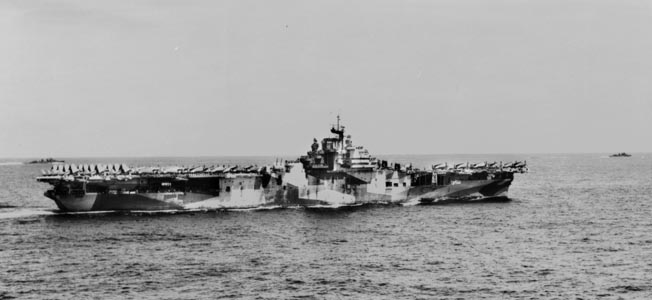
By this time American forces were well within striking distance of the Japanese home islands, and preparations were underway to take Okinawa, only 350 miles from Kyushu, the southernmost Japanese home island. For their part, the Japanese were preparing a warm welcome with Ten-Ichigo, a concerted kamikaze effort. Hundreds of young pilots, often with minimal training, were going to deliberately crash themselves into American warships.
There were still a few trained Japanese pilots around, at least enough to make life uncomfortable. At one point, Hornet found itself under attack by Japanese dive bombers.
“There were Japanese dive bombers coming in on us,” Crosby remembered, “and our antiaircraft wasn’t getting them. We pilots wanted to take off because we were much more effective than antiaircraft; when antiaircraft hit something, they were lucky.”
Crosby and other Hellcat pilots raced to their planes, but after he scrambled into the cockpit Crosby found he couldn’t get the engine started. “It was in an older model, a Hellcat F6F-3,” he explained, adding, “I was blocking Billy Watts [Lt. (j.g.) Charles Watts], who was right behind me in a F6F-5. The deck people moved me out of the way onto elevator No. 2, which was on the port side of the ship.
“When they got me out of the way, they launched Billy by catapult. I have to congratulate him. I don’t know if I could have been as sharp as he was. He launched and knocked a Japanese dive bomber right out of the sky right out of the catapult! Just moments after Billy launched, a bomb was coming right for us. The captain ordered a hard starboard turn to avoid it.”
The Hornet executed a violent turn, so steep that the flight deck tilted to one side. It was even possible that Ted and his Hellcat, perched precariously over the water on No. 2 hangar, might have been tossed overboard. “God bless my plane captain,” Ted declared. “He had already secured my plane with a couple of cable anchors and tie downs. But I got sopping wet as I climbed out of the cockpit. It was from a waterspout created by a bomb that hit right next to us.”
“Kamikrazies”
On April 16, 1945, Ted Crosby became an ace in a day, shooting down five Japanese planes on a single mission. The Marines had landed on Okinawa on April 1 and, as time went on, the battle for the island intensified. Swarms of kamikazes flew out of Kyushu on suicide missions, crashing into any Allied ship they could find in the area. Ted and his fellow aviators called them “kamikrazies.” They seemed to conform to the wartime stereotype of fanatics who would rather commit suicide than surrender.
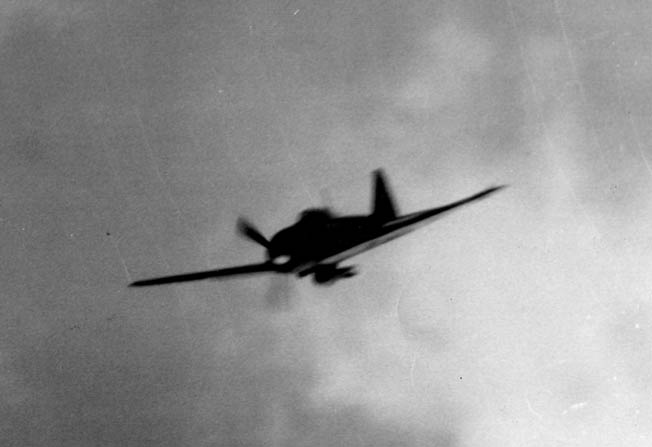
In truth, a cultural gulf that was wider than the Pacific they fought over separated the Americans from the Japanese. Fed on ultra-nationalistic propaganda that glorified the Bushido Code and Samurai spirit, the impressionable young Japanese pilots did not think of themselves as committing suicide. Suicide per se might be dishonorable, but the kamikaze felt he was giving his life to protect the homeland. It was a moot point, and a tragic loss of life, for by 1945 such sacrifices were in vain.
Crosby began April 16 on a target combat air patrol with Lt. Cmdr. Beebe. Crosby’s division (four Hellcats) was led by Lieutenant Milliard “Fuzz” Wooley; Ensigns J. Garrett and W.L. Osborn completed the quartet. As VF-17’s war diary put it, “Wooley’s division ‘tallyhoed’ [engaged] 12 Jacks and Zekes at 24,000 feet and started working them over.”
Actually, there were two groups of Japanese planes, a dozen or so at around 24,000 feet and a second group that was flying about 9,000 feet lower. Their main target was a destroyer, possibly a Fletcher-class vessel, that was cruising north of Okinawa. Ted could not recall the name of the ship, but its call sign was “Whiskey Base.”
The fighter director aboard the destroyer was happy to see Hellcats above him but dismayed when it appeared that they were leaving. “The fighter director said, ‘I see what you guys are doing––don’t leave us!’ Wooley replied, ‘Don’t worry. We’ll be back. We want to meet these guys halfway before they can get to you!’”
In the process, Wooley and Crosby became separated from the other pilots. Squadron Commander Beebe called them, asking for their position. Crosby said, “Fuzz” replied, ‘Never mind, skipper, we got them [the Japanese] cornered!’”
“It was a mixed group,” continued Crosby, “of some trained pilots escorting some kamikazes.”
Five Kills For Crosby
The first plane Crosby encountered was a Mitsubishi J2M “Jack” fighter that was coming head on. Crosby and his adversary were seemingly on a collision course, like two medieval knights jousting in a tournament.
“On the right-hand side of the cockpit there’s a service counter that controls the Hellcat’s six machine guns,” Crosby explained. “There were levers that permitted us to control the guns—fire two at a time, four at a time, and so on. When you first enter a fight, you have all six going at the same time.
“Well, I met that Japanese plane head on with my six .50-caliber guns, and the impact of the bullets blew him apart. Part of his engine and propeller, with the prop still turning, flew right over my head. I picked out another [Japanese plane], executed a turn, and went right after him.”
The second was a Zeke, a kamikaze, not a fighter, so Ted proceeded with caution. “We all realized you had to watch out what you did because the kamikazes were loaded with TNT to do us maximum damage. When you hit one, they would really explode! Once they exploded, you’d find yourself flying through lots of garbage and debris.”
After he downed the Zeke, Crosby attempted to find his division leader only to notice tracer bullets zipping past his Hellcat. Ironically, Ted had found his leader, but not in the way he wanted! The bullets were from Wooley who, in the excitement, had mistaken Crosby for the enemy. Realizing his error, Wooley sheepishly radioed Ted, “Did I get you, Ted?”
“Noooo.…” Ted replied, “but let’s settle down and get more of these guys!”
Wooley readily complied, going after another Japanese plane, but found he was out of ammunition. Ironically, his last few bursts had been expended when he mistakenly fired on Ted. Wooley dove down, making himself a decoy by luring enemy planes into Crosby’s guns. The ruse was successful, enabling Ted to down two more Japanese planes.
They decided to call it a day, but as they started back to the carrier Crosby spotted kamikaze heading toward the same destroyer they had helped protect earlier. Ted gave chase, tattooing the Japanese plane with a spray of .50-caliber lead. He broke off his attack because they were nearing the destroyer, and he knew that the ship’s radar could not distinguish friend from foe.
Sure enough, the destroyer opened fire, and the kamikaze, already disabled by Ted’s guns, angled down and crashed onto a nearby island. Thus, Ted Crosby became an ace in day, credited with three Jacks, a Zeke, and a Val dive bomber. His skill and valor that day won him the coveted Navy Cross.
Ted says he did not feel too good about downing those kamikazes at first. He realized that most of the suicide pilots had little training and were for the most part sitting ducks to experienced Navy airmen. However, Ted felt better “when I was told the extent of the damage they did on ships, and by shooting them down I was saving American lives.”
“I Lost Friends That Day”
Even late in the war the skies over Japan could be decidedly dangerous. Crosby participated in the raid on Kure, a major Japanese naval base near Hiroshima, and several surrounding airfields. Hornet’s war diary states that on March 19, 1945, its Hellcats encountered a large formation of Georges while flying over the northwestern coast of Shikoku en route to Kure.
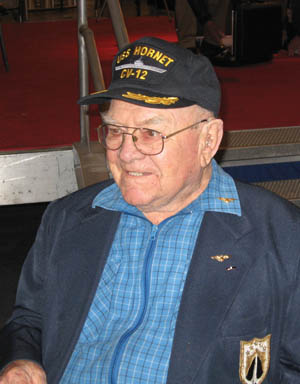
“George” is the Allied name for the Kawanishi N1K2-J Shiden-kai fighter, a plane many considered superior to the Zero—and equal to the Hellcat. Captain Minoru Genda of Pearl Harbor fame swore by them and urged that Japan build up squadrons of Georges instead of squandering lives in kamikaze attacks.
The Hornet diary states that though the Hellcats managed to splash 20 Japanese planes, six Hellcats were lost. “Yes,” Crosby sadly admitted, “I lost friends that day—we lost six guys. And it was due [in part] because we had a stupid leader.” Ted doesn’t name the officer but described the events as he remembered them. “We were flying along under a thin overcast. Wooley and I were trying to get this guy [the leader] to fly over it, but he wouldn’t do it. ‘Stay off the air—I’m the leader—get out of here!’ he said. Well, Wooley and I dropped back and climbed up. As we popped up over the overcast, we saw them—four Georges tracking and watching the rest of the squadron, who were ahead of me and Wooley.”
As soon as they saw Crosby and Wooley, and knew their cover was blown, the Georges plunged down on the main body of Hellcats without hesitation. The result was a massive dogfight that cost the lives of six Americans.
A Close Call With a George
Crosby also had a close call on a photo-recon mission near Shokaku, after American carrier planes had attacked Japanese shipping in the area. “I had my plot board out and I’m putting down the time of day, the slant of the sun, and all that had to do with photography. Suddenly, I saw stuff [bullets] bouncing off my wing. I look back, and there’s this guy on my tail—probably a George. Only time I ever had a guy on my tail.”
After one pass the George broke off the attack and seemed to head back to his base. Crosby was not inclined to follow him. At the moment he was alone, and following an enemy plane over enemy territory did not seem like a wise thing to do. After he got back to Hornet, Ted found an unexploded 30mm shell in his cockpit armor, mute testimony to his luck and the fact that American aircraft designs protected their pilots.
Ted Crosby remained in the Navy after the war and retired with the rank of commander. Although he had a long and distinguished naval career, the memories of his days aboard Bunker Hill and Hornet remain fresh, even after the passage of 65 years.
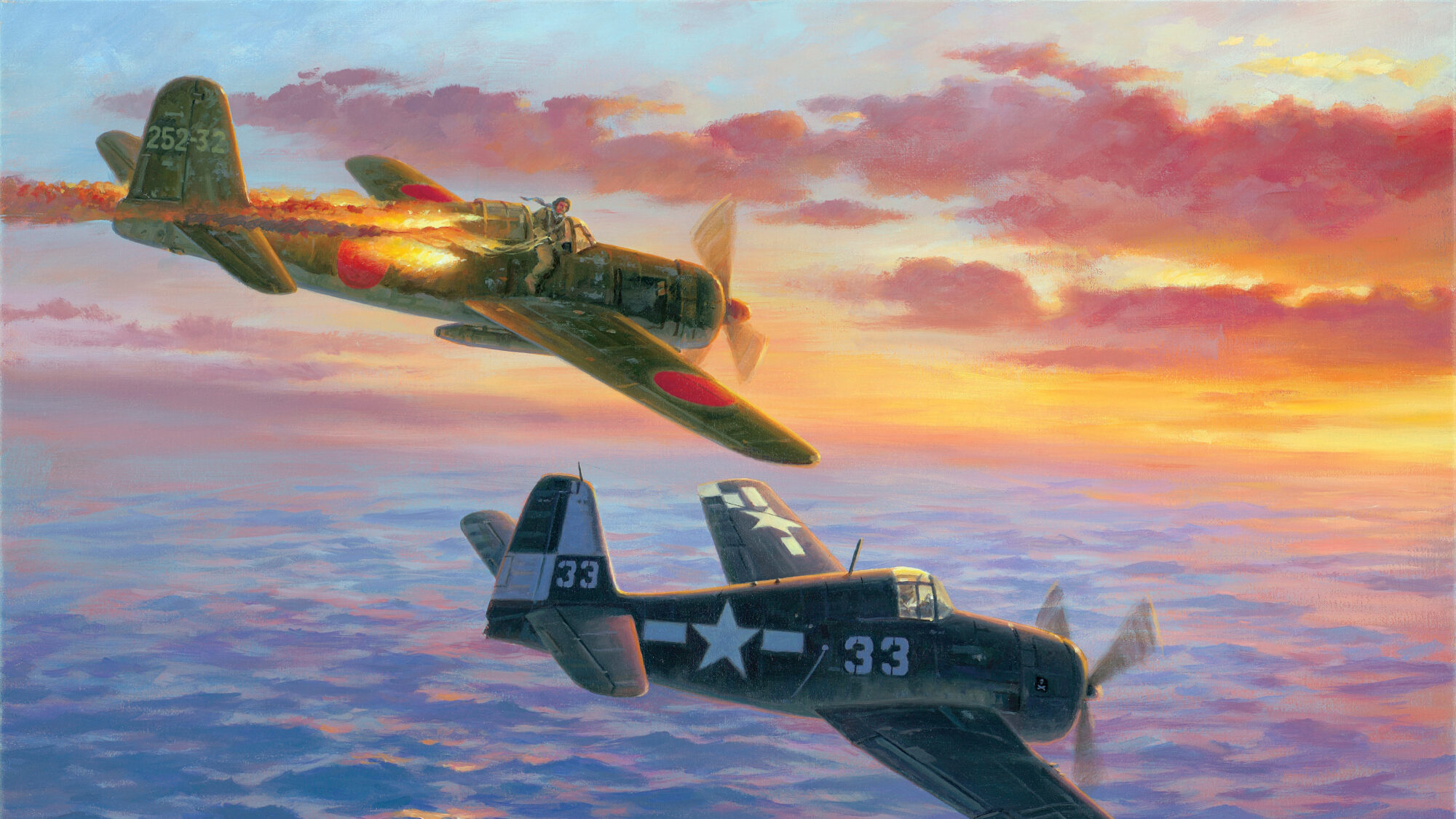
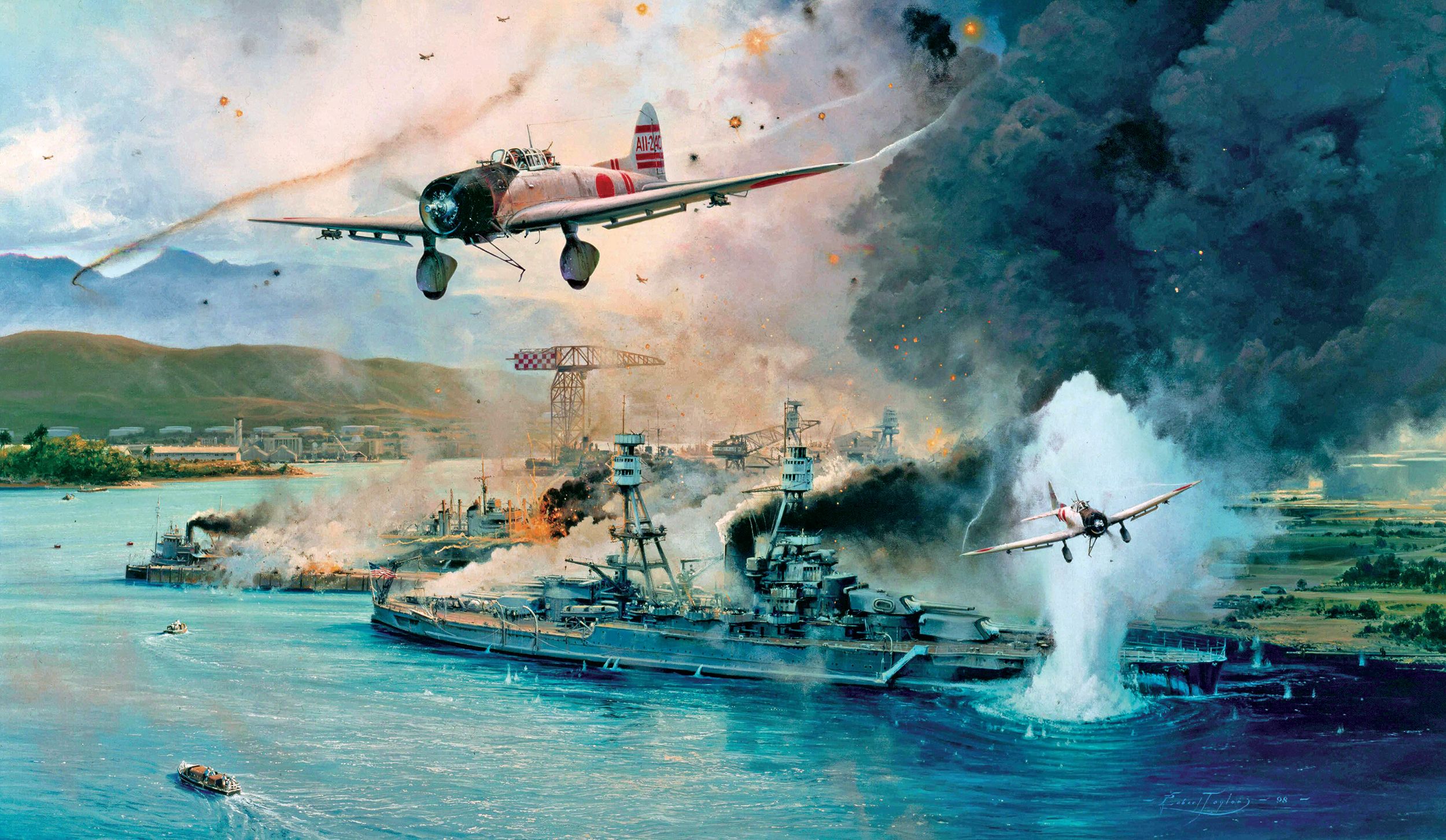
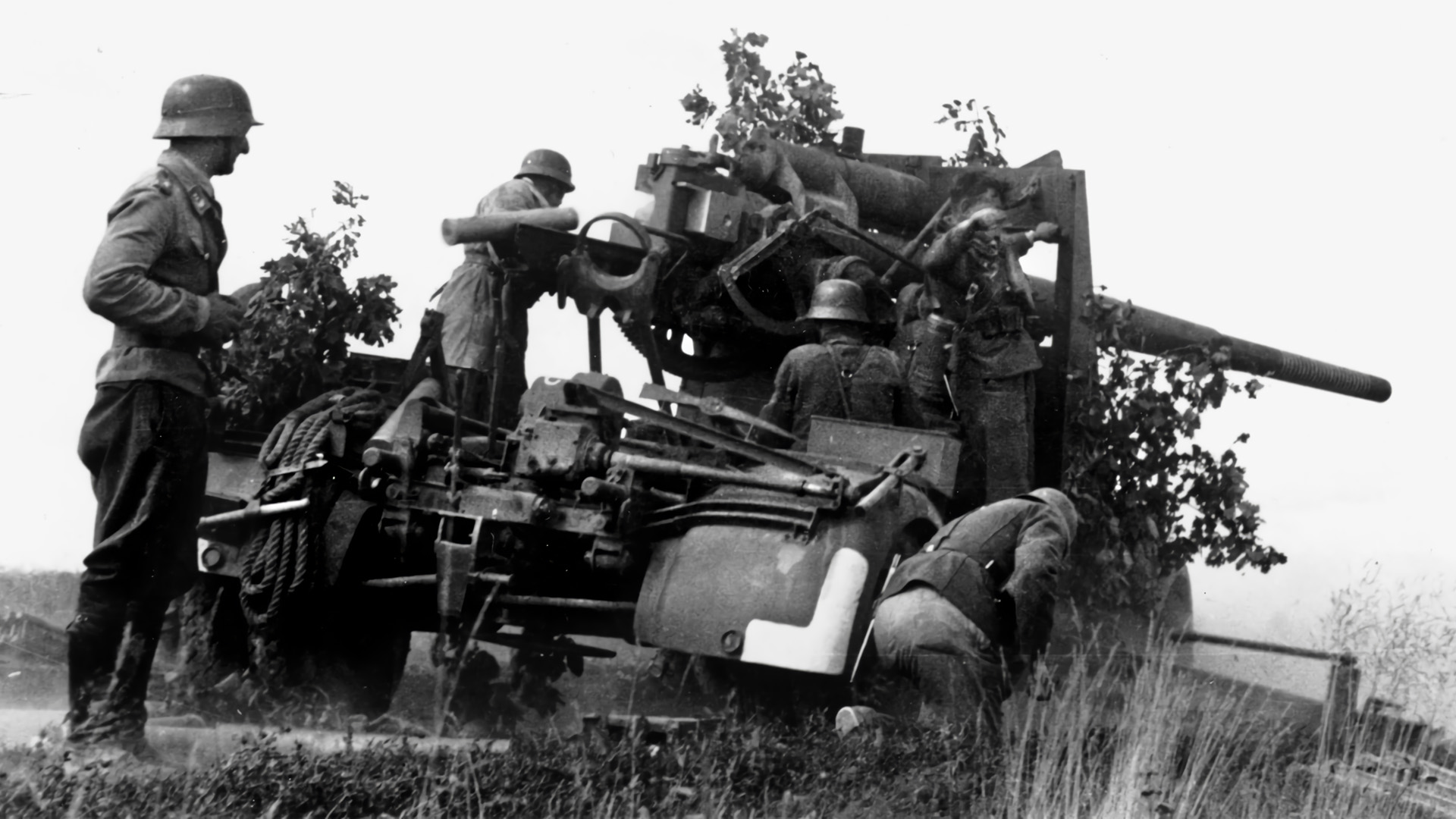
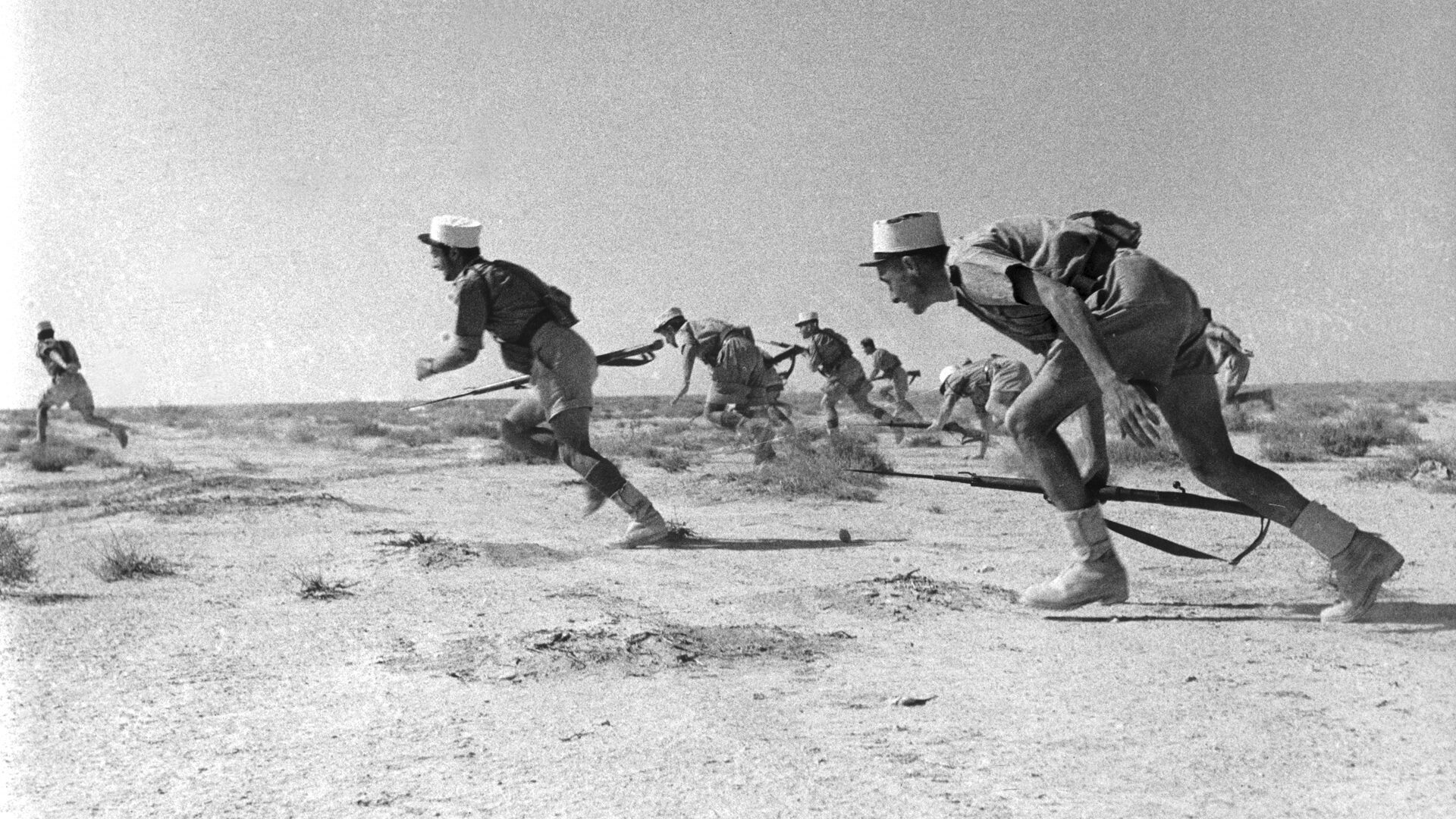
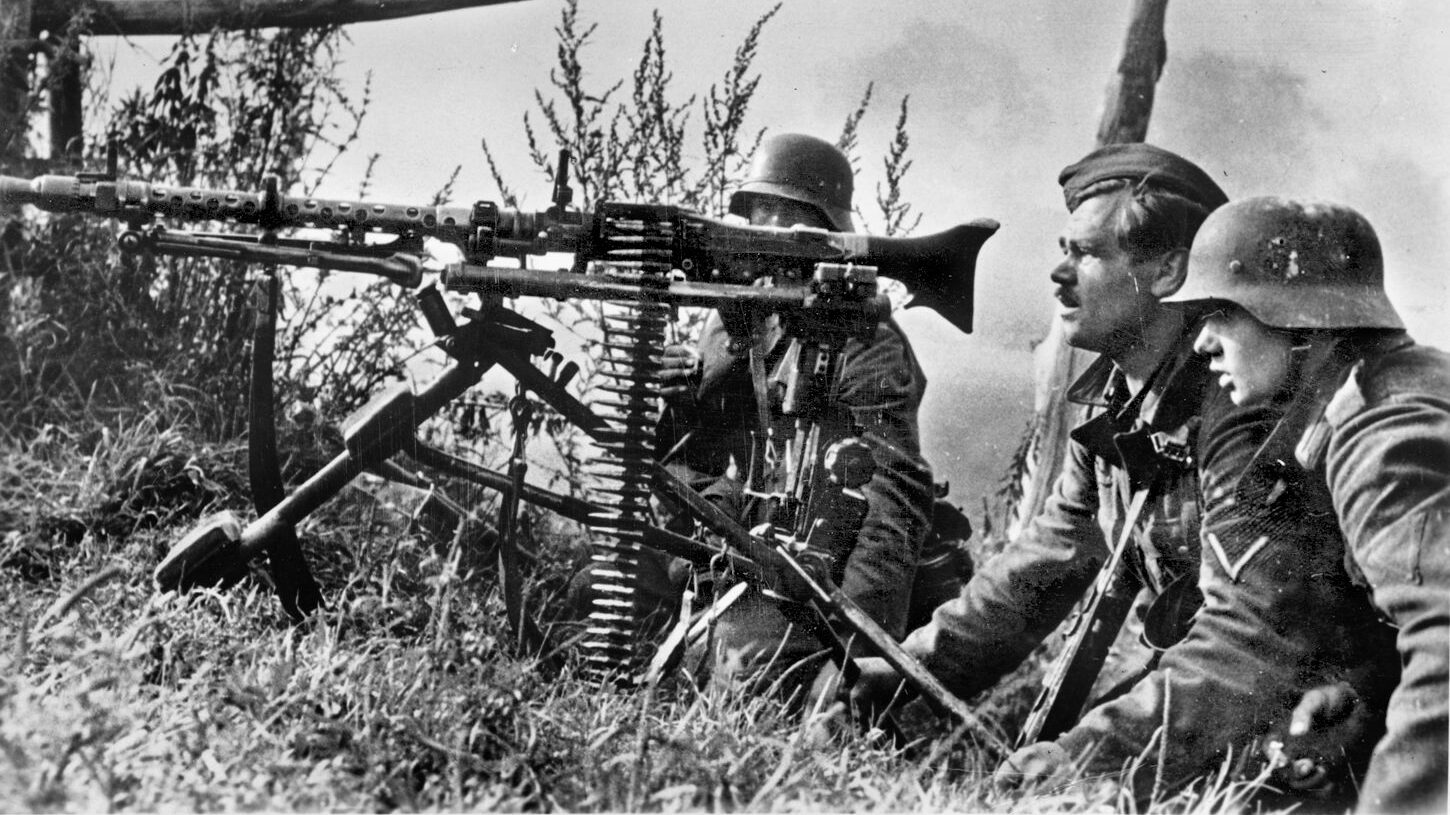
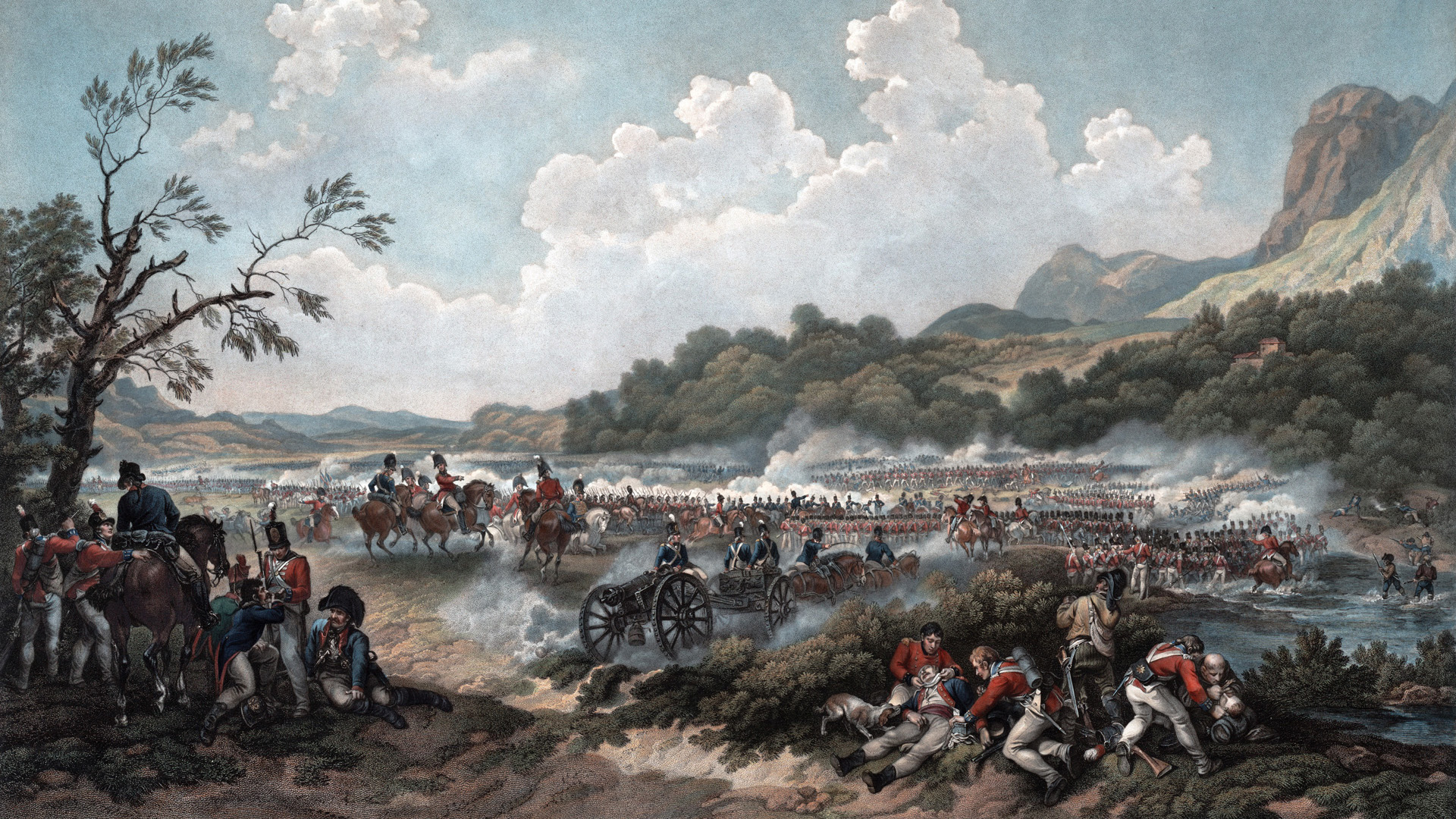
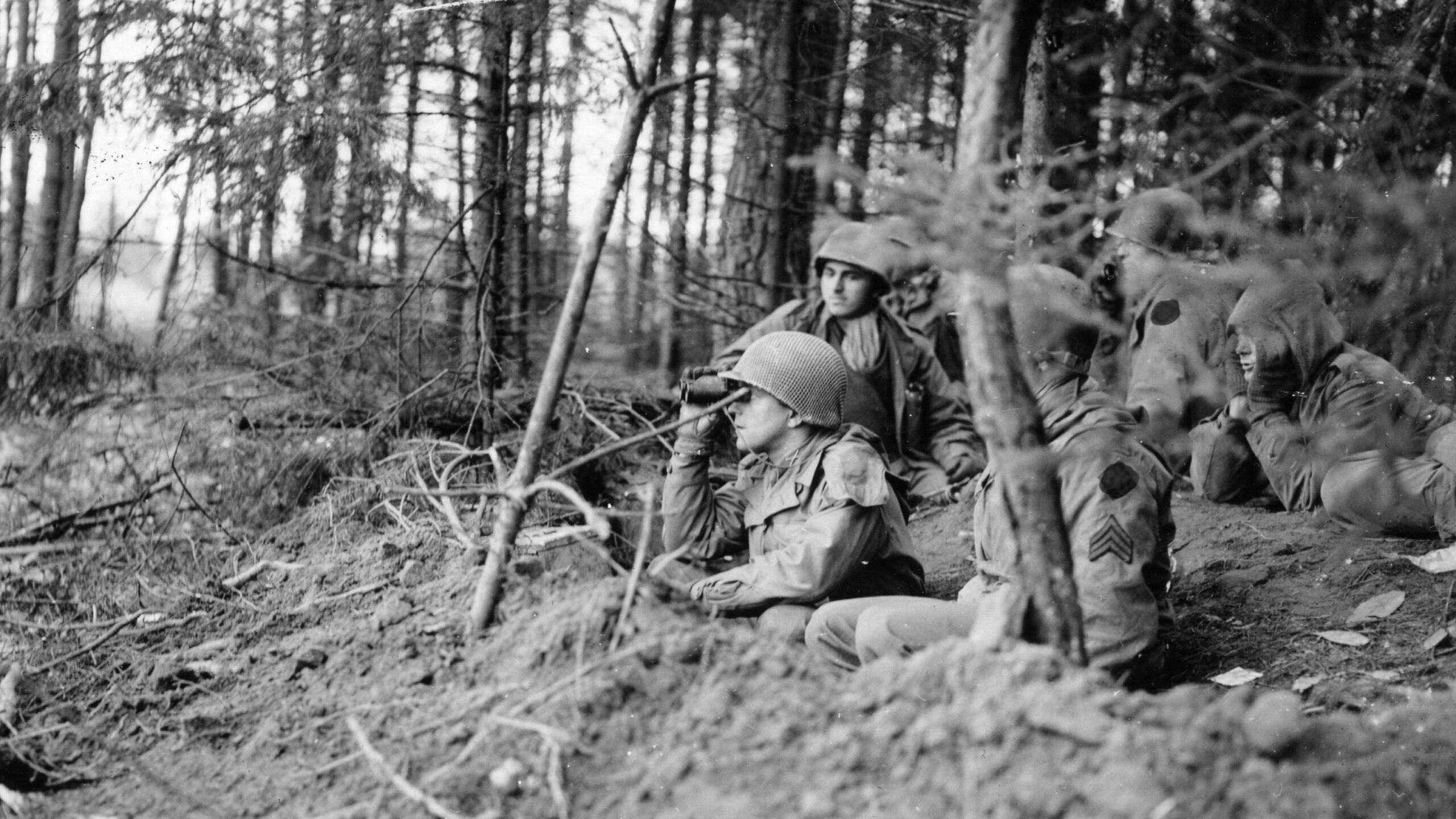
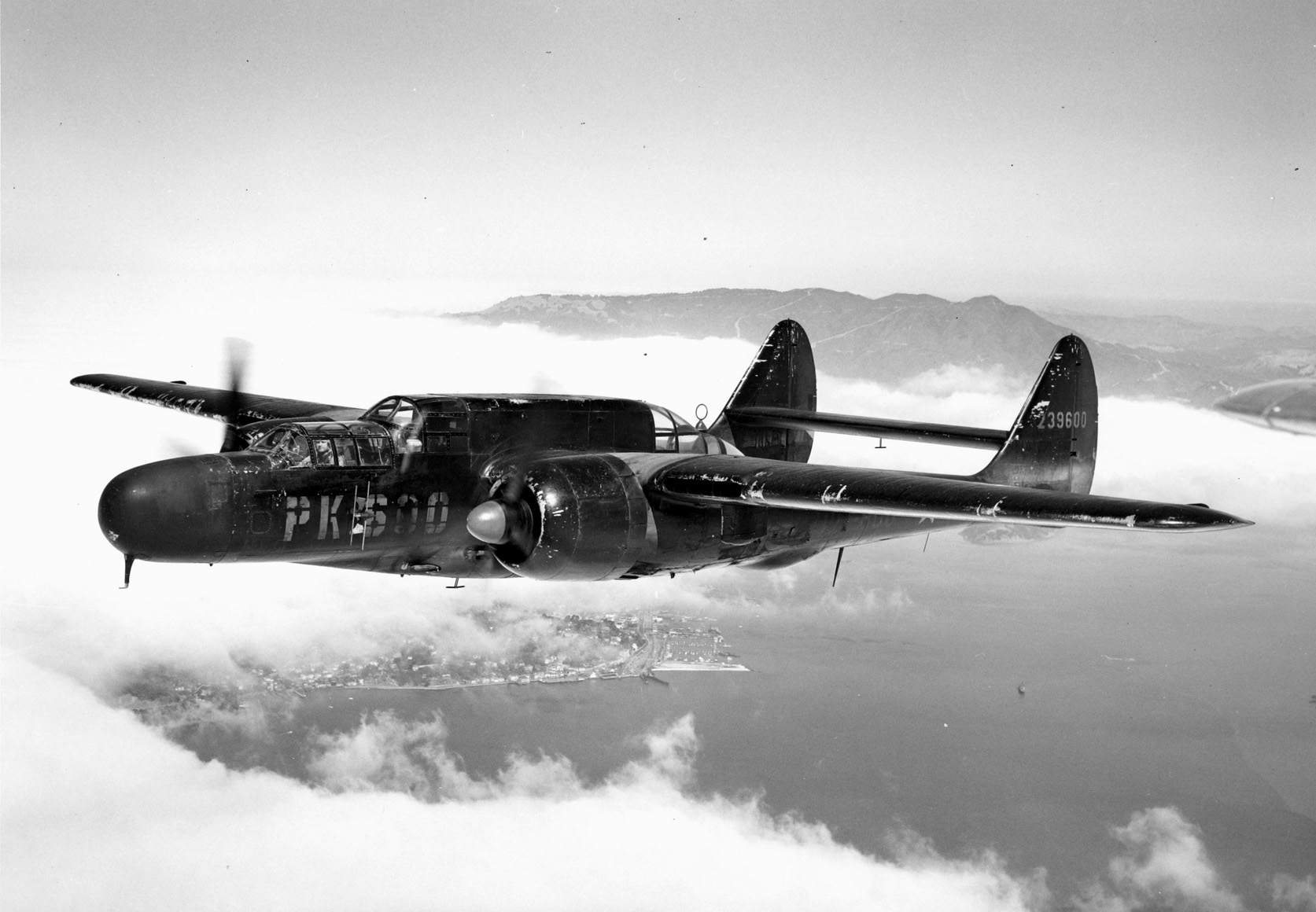
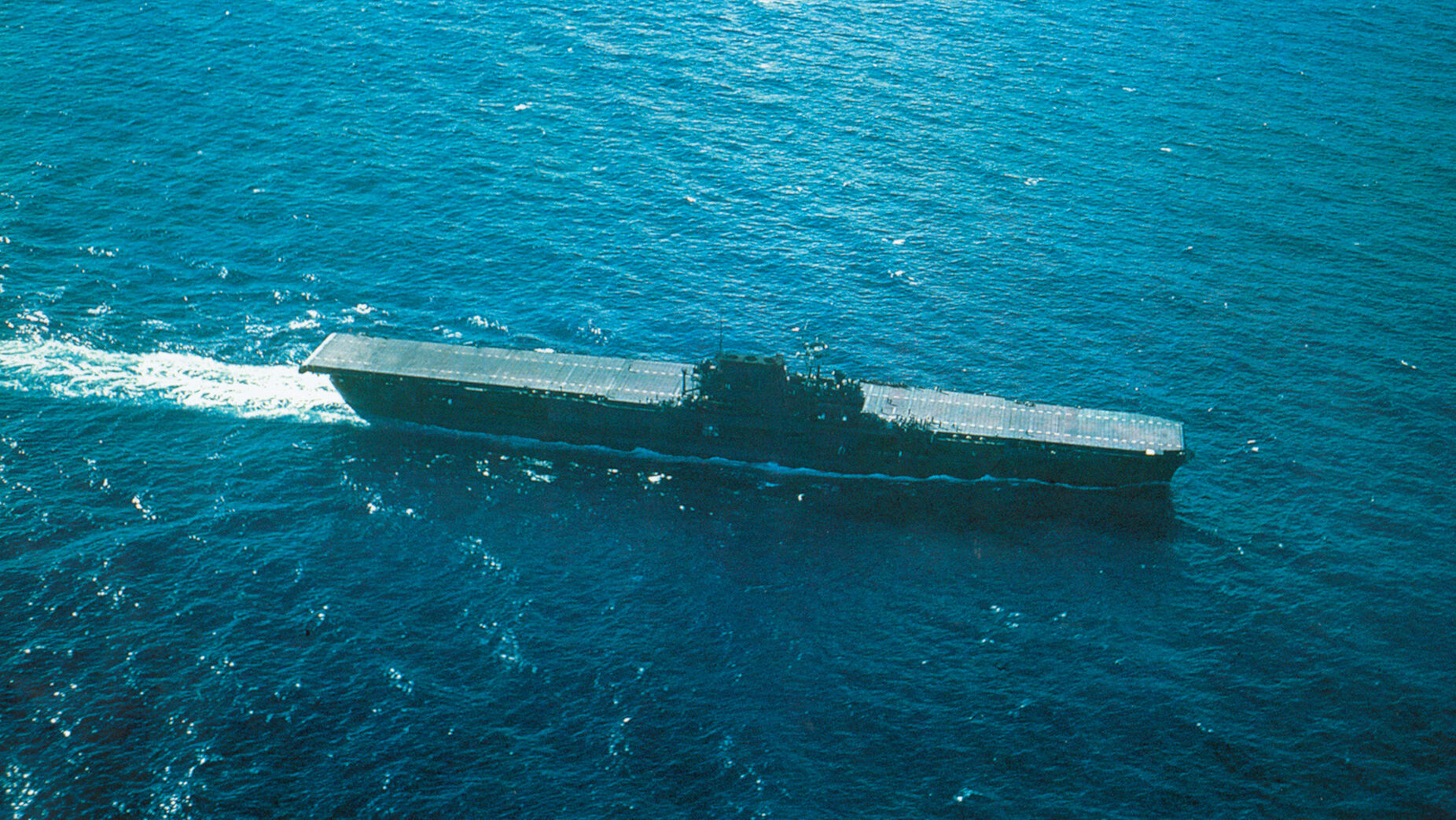
Join The Conversation
Comments
View All Comments